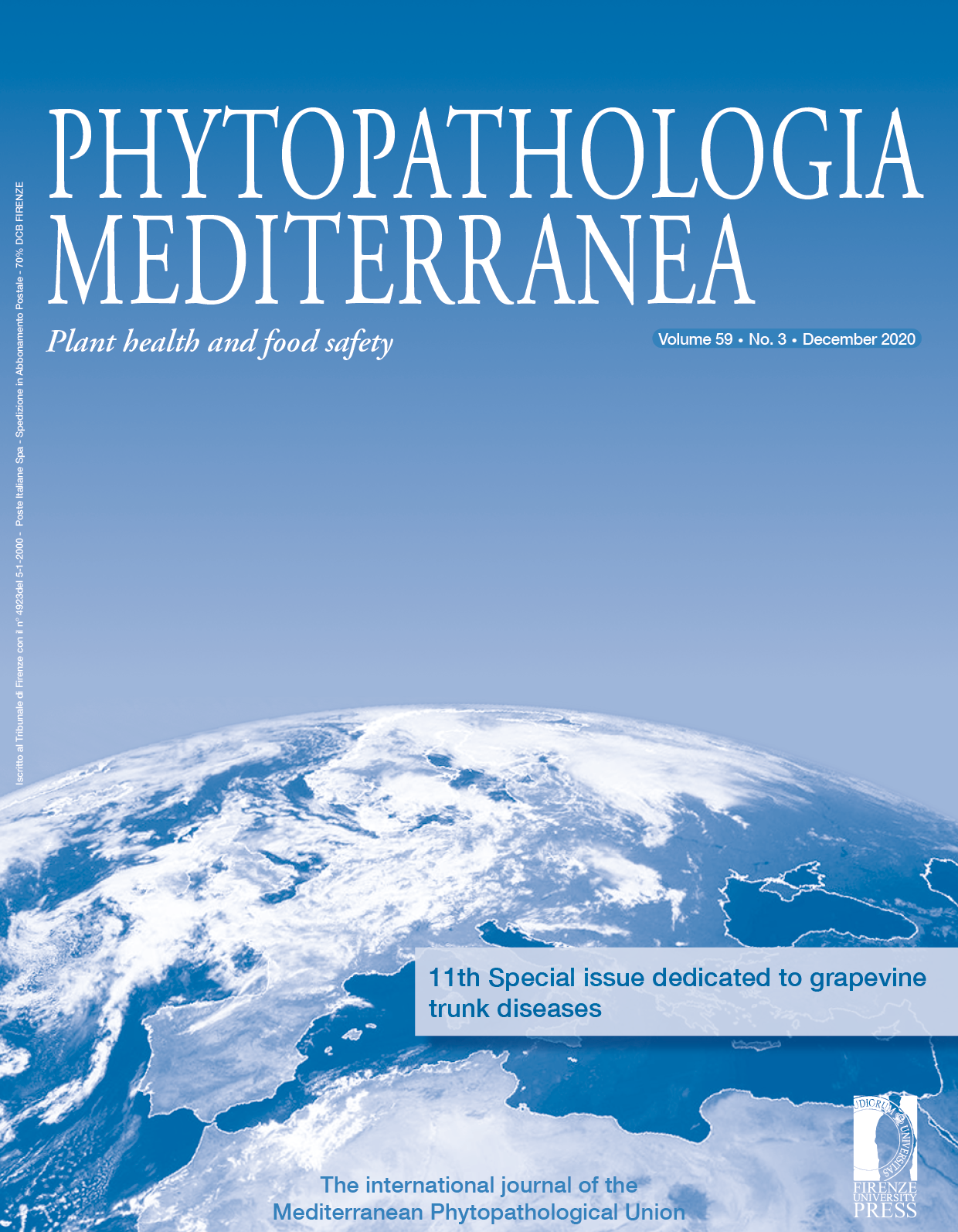Precise nondestructive location of defective woody tissue in grapevines affected by wood diseases
Published 2020-08-05
Keywords
- CT scan,
- micro-CT,
- MRI,
- grapevine trunk diseases
How to Cite
Abstract
Grapevine trunk diseases are major threats to viticulture. A diverse array of Ascomycetes and Basidiomycetes can affect perennial and, indirectly, annual organs of grapevines. Early infections produce wood discolouration, brown wood streaking, black spots and wood necroses. However, all wood symptoms are internal, making nondestructive identification of infected plant material very difficult. To date, there are no nondestructive methods for detecting the presence of developing wood infections, neither in nursery nor field conditions. This means that infected propagation material is planted into new vineyards. Three technologies, magnetic resonance imaging (MRI), computed tomography scan (CT scan) and X-Ray microtomography (Micro-CT), were assessed for determining presence, location and extent of grapevine wood defects caused by fungal infections. Results indicated that MRI lacked resolution to differentiate between asymptomatic and defective wood. CT scan analyses revealed substantial differences in radiodensity when comparing asymptomatic wood to wood with black spots, necroses, and decay. Greatest resolution was achieved with micro-CT (6 μm). This technology precisely distinguished asymptomatic from defective wood, for wood symptoms including necrosis, decay, black spots and brown wood streaking affecting individual xylem vessels, in perennial wood and canes. Micro-CT was thus the best method for nondestructive identification of wood defects resulting from infections. Further work is required to make this technology feasible for the rapid screening of grapevine nursery stock, both in nurseries and at planting.







